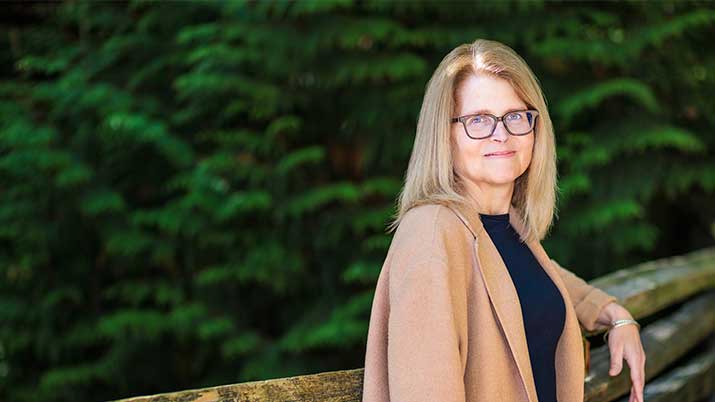By Blake Murphy ’14
Mention business and journalism together in the same sentence and your audience is likely to be primed for a discussion on the economics of newspapers or the business section of the Sunday edition.
But the Decoding Social Media pilot program at the University of British Columbia’s Graduate School of Journalism is trying to change that. The program, a joint-venture with UBC’s Sauder School of Business, had a successful trial run in the spring of 2013 and will continue for the 2013-14 academic year.


The course has both journalism and business students, creating a sometimes-tense but usually-synergistic classroom that benefited not just the students but local media partners as well. Student groups learned the ins and outs of social media platforms for the bulk of the term before turning their attention to pilot projects for local media partners to apply their learning.
As feedback rolled in from students and partners alike, there was little doubt that this program fills a gap in the education of both journalism and business students.
“I felt it went very well,” said Alfred Hermida, an Associate Professor at UBC’s Graduate School of Journalism. “As always, there are areas to improve, but we felt it went very well. We had a good partnership with local media organizations, and what I was most pleased with was that students were able to take what they learned and apply it in a real-world situation for these organizations.”
Hermida was one of two professors for the class, joined by Paul Cubbon, a Marketing Instructor at the Sauder School of Business and Robert H. Lee Graduate School.
Cubbon agreed on the efficacy of the course and highlighted the mixed-class as a key reason for its success.
“Overall, the dynamic of the dialogue between two very different student groups was excellent,” said Cubbon. “Students got to see multiple perspectives on any one topic, and I think it helped develop critical thinking, sensitivity in listening, decoding and then in communicating for more effective outcomes.”


The interaction between the two student groups was a common theme when discussing the course with professors and students. A joint program creates challenges, with students possessing different points of view, skill sets, and desired takeaways for the course.
Those challenges proved to be a large part of the learning experience, though, giving journalism students a more disciplined viewpoint while introducing business students to different means of telling a story and creating a brand profile.
“Working with business students opened my eyes to a whole new vernacular when it comes to marketing,” said Garrett Hinchey, a first-year graduate journalism student from Yellowknife. “In the world of a journalist, it became clear that these tactics and strategies were translatable to marketing yourself, too.”
Learning from students from the other program may not have been outlined on the syllabus, but it wasn’t an idea that was foreign to the instructors as they drew up blueprints for the class. Either program could have trialed the course on their own, of course. But Hermida and Cubbon, and the schools as a whole, anticipated this beneficial relationship.
“We looked at this as social media being about interacting with different people and engaging with the world,” said Hermida. “The course was structured that way, having two different groups of students and having them learn from each other. “
Thanks to the positive feedback from students and the media partners, the course will run a second time in the coming year. Small tweaks will be made as the instructors take feedback into account, and the next batch of students may see more guest speakers and earlier formation of groups for the final project to help work through tensions earlier.
Those final projects were the highlight of the course for many. A group of two business students and two journalism students helped Vancouver Magazine develop a social media plan for its annual Vancouver Restaurant Awards, building awareness and fostering long-term interest. Another group of similar structure showed Global News show AM/BC how social media could help keep the audience engaged even if they missed a show. And a more journalism-heavy group worked with Vancouver Sun reporters target their social media to the audiences of their specific beat.
“The media partners we were working with were remarkably positive,” said Hermida. “It’s rare that these organizations will have a group of smart, engaged people looking at an issue they have in such detail. The feedback we got is that the reports were impressive and helped implement real change in the newsroom.”
At the same time, the course is helping to prepare business and journalism students for a working world in which social media can be a large tool for companies and individuals. Decoding Social Media is helping lay the groundwork for leveraging that tool in the best way possible.


